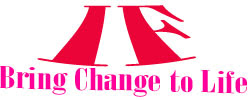Confiscation and Fusion can be defined
as a lead- follow approach to dancing to any music that does not have a defined
dance aesthetic. It accomplishes the form in dance with blending and adapting
to music. It uses different influences and styles. It is a connection between
the movement of a partner and the music. It means creating a new style to any
unique music or a combination of two or more established dance aesthetic into a
single dance that reflects the song. Dancers integrate other forms of dance to
new form of dancing like use of African dance and integrating it into the
American culture. Dancers are fused in various dances like the Lindy Hop and
the Jitterbug where they find commonalities in dance styles and creating new
movements by adapting to it.
Analysis
Many millions of southern blacks had
migrated to cities in North America. The type of dance that was common in these
cities was Afro-American dance that was usually fused with ballroom dance.
Ballroom dancing was one in ballrooms like the Savoy Theater. (Perpener, 2001)
An example of an artist who participated
in the dance was Ernie Smith who was European American. His remarks regarding
the Lindy dance was that it was dance for the blacks even if white Americans
danced it. He explained that it arose from the black culture and their experience.
However as it fused in the white community it became jerky and very different.
The Jitterbug form and technique was
very similar but was structurally different, this was to please the white community.
Both the Lindy and the Jitterbug were dances for either black or white. They
were both related since they came from the fusion of cultures. (Glass, 2010)
From the early days of hop in the 1930s
jazz music and lindy and jitterbug dance developed and this defined in the US
and African Americans. Africans introduced their dance to North and South
America as slave labors in the 1500s.This dance merged with European dances
that formed an aesthetic in the Americans. In Africa dance is part of life but
in America, it helped enslaved Africans to connect with their cultural
traditions.
The Linda Hop type of dance first evolved
in Harlem Newyork in the 1920s that was originally jazz music. It was a fusion
of many dances like jazz, tap, breakaway and Charlseton.This type of dance had combined
elements of partnering and solo dances by using movements and improvising of
black dances using the format for eight-count structure from European partner
dances.
The
Lindy has the swing out that is a basic step where the open position each
dancer is connected hand in hand, its closed position men, and the women are
connected in an embrace. American Swedish and dancers from Britain revived it in
the 1980s but now dancers that are affiliated with organizations from North
America, South America, Asia, Oceania, and Europe represent it. It can be referred
to as the street dance since it has evolved its organization agencies.
Charles Lindbergh popularly danced this routine
dance together with George Snowden who stated that they used to call it the
basic step before Lindbergh did the hop across the Atlantic. White people had
stated to watch black dancers who did acrobatic to entertain the whites. They
even taught tourists the dance.
Linda Hop entered in the mainstream of America
culture in the 1930s where dance studios started to teach the dance .In the
1940as it moved offshore in films and with American troops that were stationed overseas.
In 1994, there was an excise tax for dancers due to World War II where dancing
signs were not allowed. Nowadays Lindy Hop is found in many westernized cities the
local swing dance community in every city displays their different cultures.
On the other hand, Jitterbug dance was popular
in the 20th century in the United States and is associated with the
swing dance as the Lindy Hop and East Coast Swing. Tourists who watched the
dance thought it was a choreographed routine where regular dancers were enjoying
the social dance.
Jitterbug is slang name for alcoholics who
suffered from jitters. Dancers danced without any control or knowledge of the
dance .It was popularized to mean swing dancers. People were jumping around,
cutting loose, and going crazy.
During World War II, the jitterbug spread
across the Pacific when there were taxes on dancing. It also spread to Atlantic
Oceans. In ballrooms were filled with working class women and also American soldiers
and sailors. Couples were warned of doing rude American dancing. The troops
that were stationed in France in 1945 jitterbugged and it became popular.
This type of dance was part of rock and roll.
Janis Martin had equated jitterbug with rock and roll. The Philadelphia
television displayed the popular songs and therefore the dance became famous
and it was described as being less acrobatic unlike the Lindy Hop. (DeFrantz,
2002)
African Americans during enslavement
worked while dancing. This dances moved to Minstrel shows that both blacks and
whites performed introduced black dances in the 1800s.It. Mostly Africans
danced parts where they were ridiculed. These performances raised
professionalism standards and African dance became popular with the whites.
Choreographers fused African American themes and movement styles in their
dances and blacks were hired to perform.
Works cited
DeFrantz, Thomas. Dancing Many Drums: Excavations in African American
Dance. Madison, Wis: University of Wisconsin Press, 2002. Internet
resource.
DeFrantz, Thomas. Dancing Revelations: Alvin Ailey's Embodiment of
African American Culture. New York: Oxford University Press, 2004. Internet
resource.
Glass, Barbara S. African American Dance: An Illustrated History.
Jefferson, N.C: McFarland & Co, 2012. Print.
Perpener, John O. African American Concert Dance: The Harlem Renaissance
and Beyond. Urbana [u.a.: Univ. of Illinois Press, 2001. Print.



0 Comments